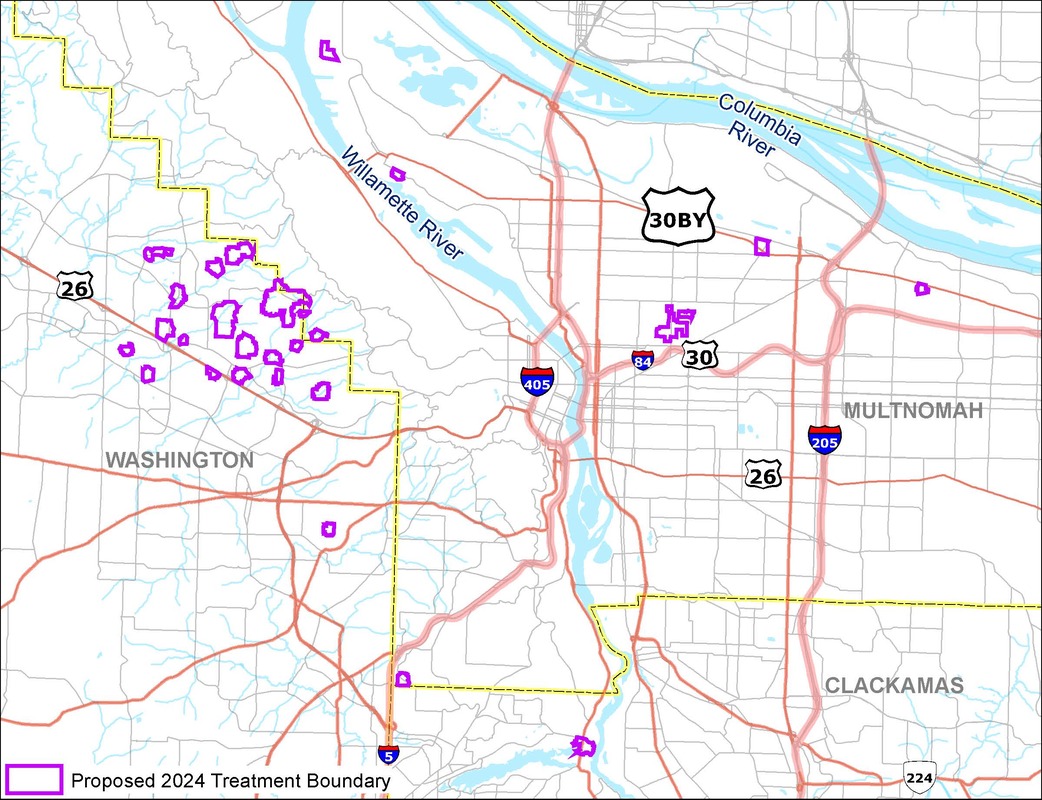2023 Japanese Beetle Eradication UpdateThe Japanese beetle (Popillia japonica) is a serious invasive insect pest threatening Oregon and the western United States. If the beetle were to become widely established in the state, residents and farmers would see severe damage to over 300 plant species, requiring increased use of pesticides in order to maintain our way of life. In 2016, the most extensive infestation in the state was discovered after the Oregon Department of Agriculture (ODA) trapped 369 Japanese in Washington County. This triggered ODA to initiate a long-term eradication project aimed at safeguarding Oregon's agriculture and natural ecosystems with support from local communities and municipalities. In 2017 the ODA trapped almost 24,000 beetles in Washington County, further reinforcing the severity of the infestation. Since that time ODA has coordinated larvicide treatments that kill Japanese beetles in the soil during their larval life stage. An additional foliar treatment targeting adults are conducted in particularly high-risk areas. Since 2017 the number of beetles trapped and the size of the treatment area have been significantly reduced as a direct result of the eradication program.
ODA treated 2,500 acres for Japanese beetle with the low-risk pesticide Acelepryn. Successful eradication of several small pockets of beetles allowed the treatment area to be 30% smaller compared to 2022. A large infestation of Japanese beetles has been developing on a small blueberry farm since beetles were first detected in 2020. ODA could not treat the blueberry farm in 2021 and 2022 but received permission from the landowner to treat in 2023. ODA treated the edible plants with a product called Altacor, which attacks Japanese beetles at both the larval and adult stages. Since the infestation was so severe at the farm, four treatments were conducted in 2023: one larval treatment and three supplementary foliar spray treatments. In 2023, ODA trapped 6,399 Japanese beetles, a significant increase from the number of beetles trapped in 2022. However, most trap catches (~85%) were isolated to the blueberry farm mentioned above. There were only 1,067 beetles trapped outside the blueberry farm, which was a 35% reduction from the number of beetles trapped outside the blueberry farm in 2022. So, while the total number of beetles trapped increased from 2022, trap catch numbers continue to shrink in areas ODA has been treating. ODA anticipates the total number of trap catches in 2024 to be much lower due to the multiple rounds of treatment at the blueberry farm. The treatment map for 2024 is 1,315 acres, a 47% decrease from last year. Areas currently infested and being treated in 2024 include Washington, Multnomah, and Clackamas counties, specifically NW, SW, NE Portland, Lake Oswego, and Beaverton. While ODA has made significant progress towards eradicating Japanese beetle in Oregon, several more years of treatments will be needed to meet that goal.
0 Comments
|
Header photograph by Whitney Cranshaw, bugwood.org
Categories
All
Archives
January 2024
|
|
This website is intended to provide readers with information that has been peer reviewed and produced from transparent and accountable sources. The Oregon Department of Agriculture is the lead agency for this project and maintains this website.
|
© COPYRIGHT 2018. ALL RIGHTS RESERVED.


 RSS Feed
RSS Feed
